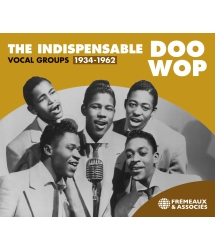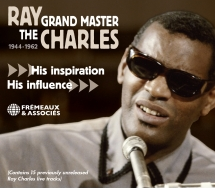- Our Catalog
- Philosophy
- Philosophers of the 20th century and today
- History of Philosophy (PUF)
- Counter-History and Brief Encyclopedia by Michel Onfray
- The philosophical work explained by Luc Ferry
- Ancient thought
- Thinkers of yesterday as seen by the philosophers of today
- Historical philosophical texts interpreted by great actors
- History
- Books (in French)
- Social science
- Historical words
- Audiobooks & Literature
- Our Catalog
- Jazz
- Blues
- Rock - Country - Cajun
- French song
- World music
- Africa
- France
- Québec / Canada
- Hawaï
- West Indies
- Caribbean
- Cuba & Afro-cubain
- Mexico
- South America
- Tango
- Brazil
- Tzigane / Gypsy
- Fado / Portugal
- Flamenco / Spain
- Yiddish / Israel
- China
- Tibet / Nepal
- Asia
- Indian Ocean / Madagascar
- Japan
- Indonesia
- Oceania
- India
- Bangladesh
- USSR / Communist songs
- World music / Miscellaneous
- Classical music
- Composers - Movie Soundtracks
- Sounds of nature
- Our Catalog
- Youth
- Philosophy
- News
- How to order ?
- Receive the catalog
- Manifesto
- Dictionnary
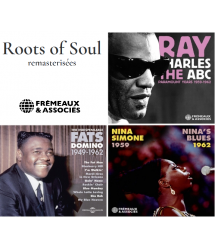
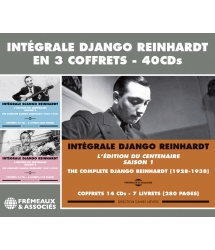
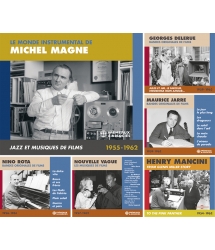
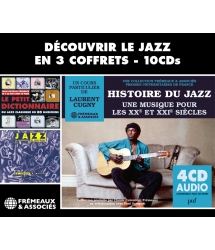







- Our Catalog
- Philosophy
- Philosophers of the 20th century and today
- History of Philosophy (PUF)
- Counter-History and Brief Encyclopedia by Michel Onfray
- The philosophical work explained by Luc Ferry
- Ancient thought
- Thinkers of yesterday as seen by the philosophers of today
- Historical philosophical texts interpreted by great actors
- History
- Books (in French)
- Social science
- Historical words
- Audiobooks & Literature
- Our Catalog
- Jazz
- Blues
- Rock - Country - Cajun
- French song
- World music
- Africa
- France
- Québec / Canada
- Hawaï
- West Indies
- Caribbean
- Cuba & Afro-cubain
- Mexico
- South America
- Tango
- Brazil
- Tzigane / Gypsy
- Fado / Portugal
- Flamenco / Spain
- Yiddish / Israel
- China
- Tibet / Nepal
- Asia
- Indian Ocean / Madagascar
- Japan
- Indonesia
- Oceania
- India
- Bangladesh
- USSR / Communist songs
- World music / Miscellaneous
- Classical music
- Composers - Movie Soundtracks
- Sounds of nature
- Our Catalog
- Youth
- Philosophy
- News
- How to order ?
- Receive the catalog
- Manifesto
- Dictionnary
My Guitar Is My Sweetheart
Chet Atkins
Ref.: FA5903
EAN : 3561302590325
Artistic Direction : BRUNO BLUM
Label : FREMEAUX & ASSOCIES
Total duration of the pack : 2 hours 8 minutes
Nbre. CD : 2
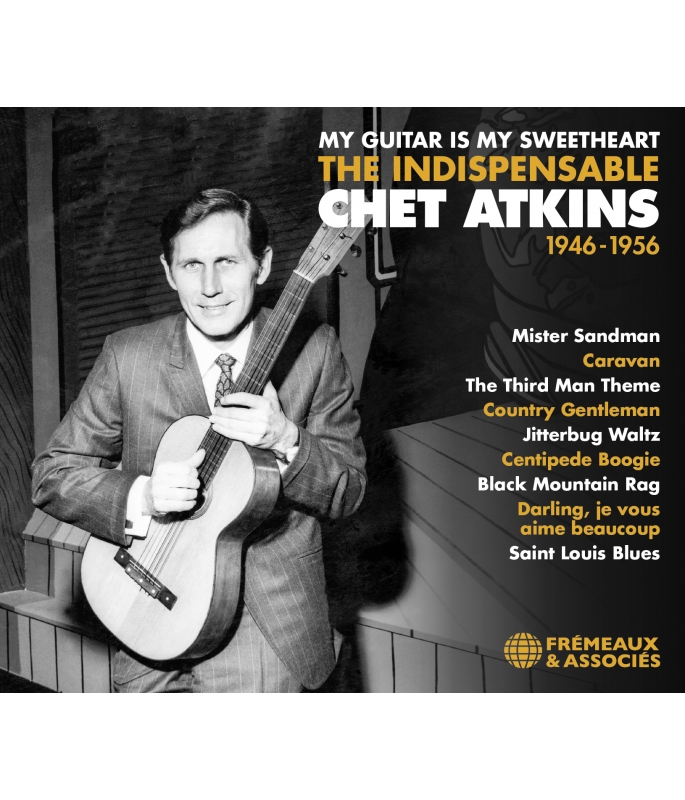
My Guitar Is My Sweetheart
The legendary Chet Atkins was much more than the emblematic country music guitar player. A guitar master and celebrity with a unique, subtle, sharp and clean sound, with a compelling fingerpicking style, he embodied the American guitar myth. A giant nicknamed Mister Guitar, he became a session man for Elvis Presley and hundreds more; an influential Producer who created the Nashville Sound and a precursor of surf rock, the hard-working Atkins involved himself in a number of genres with finesse and style: rock, pop, as well as blues, jazz, gypsy music, classical and, of course, country. The classic Gretsch Country Gentleman electric guitar was named after one of his tunes and several guitars were soon labeled the Chet Atkins models. Indispensable to any guitar lover, the cream of his dazzling solo recordings is packed into this definitive anthology of his golden age, concocted and annotated by Bruno Blum.
Patrick FRÉMEAUX
DISC 1 - 1946 -1952 : GUITAR BLUES • CANNED HEAT • STANDING ROOM ONLY • BUG DANCE • THE NASHVILLE JUMP • MY GUITAR IS MY SWEETHEART • I’M PICKING THE BLUES • BARNYARD SHUFFLE • DIZZY STRINGS • GALLOPING ON THE GUITAR • BARBER SHOP RAG • CENTIPEDE BOOGIE • MAIN STREET BREAKDOWN • BOOGIE MAN BOOGIE • INDIAN LOVE CALL • BIRTH OF THE BLUES • MOUNTAIN MELODY • HYBRID CORN • JITTERBUG WALTZ • ONE MAN BOOGIE • CRAZY RHYTHM • RAINBOW • IN THE MOOD • BLUE GYPSY • THE THIRD MAN THEME • SAINT LOUIS BLUES.
DISC 2 - 1952-1956 : NOBODY’S SWEETHEART • LOVER, COME BACK TO ME! • BLACK MOUNTAIN RAG • IMAGINATION • PIG LEAF RAG • OH BY JINGO! • HELLO! MA BABY • COUNTRY GENTLEMAN • MEMPHIS BLUES • ALICE BLUE GOWN • TWELFTH STREET RAG • GEORGIA CAMP MEETING • DILL PICKLES RAG • BEAUTIFUL OHIO • FRANKIE AND JOHNNY • CARAVAN • MISTER SANDMAN • DANCE WITH ME HENRY • DARLING, JE VOUS AIME BEAUCOUP • TWEEDLE DEE • UNCHAINED MELODY • INTERMEZZO • TENDERLY • MINUTE WALTZ • MINUET • INDIAN LOVE CALL.
DIRECTION ARTISTIQUE : BRUNO BLUM
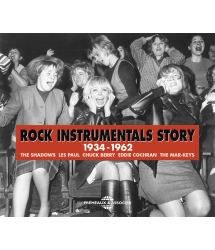
THE SHADOWS • LES PAUL • CHUCK BERRY • EDDIE COCHRAN...
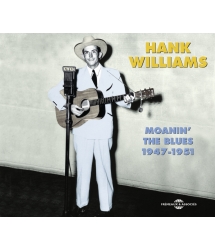
MOANIN' THE BLUES 1947 - 1951
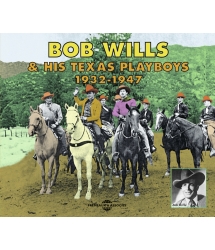
ANTHOLOGIE 1932 - 1947
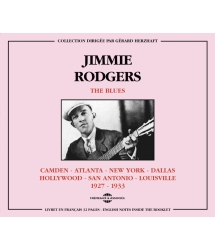
CAMDEN - ATLANTA - N.Y. - DALLAS - HOLLYWOOD 1927 -...




-
PisteTitleMain artistAutorDurationRegistered in
-
1Guitar BluesChet AtkinsChet Atkins00:02:471946
-
2Canned HeatChet AtkinsChet Atkins00:02:311947
-
3Standing Room OnlyChet AtkinsCharles Randolph Grean00:02:511947
-
4Bug DanceChet AtkinsChet Atkins00:02:541948
-
5The Nashville JumpChet AtkinsChet Atkins00:02:281948
-
6My Guitar Is My SweetheartChet AtkinsAlfio Bagnesi00:02:371948
-
7I’m Picking The BluesChet AtkinsJim Atkins00:02:471948
-
8Barnyard ShuffleChet AtkinsChet Atkins00:02:491948
-
9Dizzy StringsChet AtkinsChet Atkins00:02:411948
-
10Galloping On The GuitarChet AtkinsChet Atkins00:02:271949
-
11Barber Shop RagChet AtkinsChet Atkins00:02:381949
-
12Centipede BoogieChet AtkinsChet Atkins00:02:461949
-
13Main Street BreakdownChet AtkinsChet Atkins00:02:161950
-
14Boogie Man BoogieChet AtkinsChet Atkins00:02:481950
-
15Indian Love CallChet AtkinsCharles Rudolf Friml00:02:381950
-
16Birth Of The BluesChet AtkinsGeorge Gard DeSylva00:02:321950
-
17Mountain MelodyChet AtkinsChet Atkins00:02:091951
-
18Hybrid CornChet AtkinsChet Atkins00:02:151951
-
19Jitterbug WaltzChet AtkinsFats Waller00:02:371951
-
20One Man BoogieChet AtkinsMel Forree00:02:381951
-
21Crazy RhythmChet AtkinsIrving Caesar00:02:231951
-
22RainbowChet AtkinsAlfred Leo Bryan00:02:351951
-
23In The MoodChet AtkinsWingy Manone00:02:181951
-
24Blue GypsyChet AtkinsDiadorius Boudleaux Bryant00:02:171953
-
25The Third Man ThemeChet AtkinsAnton Karl Karas00:02:241953
-
26Saint Louis BluesChet AtkinsWilliam Christopher Handy00:02:161953
-
PisteTitleMain artistAutorDurationRegistered in
-
1Nobody’s SweetheartChet AtkinsBilly Meyers00:02:141952
-
2Lover, Come Back To Me!Chet AtkinsOscar Hammerstein II00:02:251952
-
3Black Mountain RagChet AtkinsTommy Magness00:02:161953
-
4ImaginationChet AtkinsChet Atkins00:02:121952
-
5Pig Leaf RagChet AtkinsDiadorius Boudleaux Bryant00:02:291952
-
6Oh By Jingo!Chet AtkinsAlbert Gumbinsky00:02:131953
-
7Hello! Ma BabyChet AtkinsJoseph Edgar Howard00:02:091953
-
8Country GentlemanChet AtkinsDiadorius Boudleaux Bryant00:02:141953
-
9Memphis BluesChet AtkinsWilliam Christopher Handy00:02:081953
-
10Alice Blue GownChet AtkinsThomas Joseph McCarthy00:02:031953
-
11Twelfth Street RagChet AtkinsEuday Louis Bowman00:02:191953
-
12Georgia Camp MeetingChet AtkinsKerry Mills00:02:121954
-
13Dill Pickles RagChet AtkinsCharles Leslie Johnson00:02:241953
-
14Beautiful OhioChet AtkinsBallard MacDonald00:02:161954
-
15Frankie And JohnnyChet AtkinsHugo Cannon00:02:331955
-
16CaravanChet AtkinsIrving Harold Mills00:03:261955
-
17Mister SandmanChet AtkinsFrancis Drake Ballard00:02:161954
-
18Dance With Me HenryChet AtkinsJamesetta Hawkins00:02:191955
-
19Darling, Je Vous Aime BeaucoupChet AtkinsAnna Sosenko00:02:201961
-
20Tweedle DeeChet AtkinsRichard Kirk00:02:221955
-
21Unchained MelodyChet AtkinsHyman Harry Zaritsky00:02:261955
-
22IntermezzoChet AtkinsFerdinand Heinrich Proboscht00:02:291955
-
23TenderlyChet AtkinsJacob Louis Schwartz00:03:231955
-
24Minute WaltzChet AtkinsFryderyk Franciszek Chopin00:01:451955
-
25MinuetChet AtkinsJohann Sebastian Bach00:02:281955
-
26Indian Love CallChet AtkinsRudolf Antonín Frymel00:02:561956
MY GUITAR IS MY SWEETHEART
The Indispensable Chet Atkins 1946-1956
By Bruno Blum
In the post-war years the electric guitar asserted itself as the prevailing instrument in American popular music. This new instrument was loud enough to be heard in a large band with horns and boomed in the 1939-1945 war years. Traditional acoustic guitar folk blues such as Son House or Robert Johnson's had gone out of fashion around 1937, and groundbreaking electric guitar players like T-Bone Walker were flourishing. In the jazz style, even emperor Django Reinhardt[1] had moved on to an amplified guitar by 1952, following the trailblazing Charlie Christian and influential masters such as Les Paul or Barney Kessel[2].
In the fingerpicking/arpeggio, folk guitar-led[3] hillbilly, country and bluegrass world, there was no exception to the rule. A guitar player in the separate, special country style, after displaying his excellence on early acoustic guitar recordings, and after he'd heard Merle Travis over the radio circa 1946, Chet Atkins turned to an amplified guitar, too (an Excel model by craftsman D'Angelico set with a Gibson P-90 pickup).
Notwithstanding the brilliance of Merle Travis, who also sung and composed fine songs as well as mastering the difficult finger-style guitar or fingerpicking, the perfectionist, hard-working Chet Atkins soon asserted himself as a virtuoso country guitar player. He was also influenced by Merle Travis when he wrote a few humourous country songs including Standing Room Only and My Guitar Is my Sweetheart, in which he sings his preference for the guitar over women ("she doesn't nag, she doesn't scorn") as early as 1947. On his first 78, Guitar Blues in 1946, he showed again that he had more than several strings at his bow as he was also recording in flatpicking style (guitar solos without playing the bass line on the bottom strings at the same time).
Chet embodied the supreme White America guitarist. He could improvise in the jazz sense of the word, but remained anchored in the fundamental country music tradition of the Appalachian mountains he was from. By the early 1950s the electric guitar had become a symbol of modern America along with automobiles[4]
and skyscrapers and Chet epitomised it more than anyone else, soon dubbed "Mister Guitar" in typical American fashion - like Elvis became the "King of Rock and Roll" and James Brown "Soul Brother Number One".
As he became a producer, accompanist and an important arranger, the discreet Mister Guitar was also the lost gem of rock. His wide-ranging solo career, mainly instrumentals, remains little-known and his ten first years are probably his best as they asserted and defined his essential style before his diversification, which showed a remarkable eclectism but also somehow diluted his very essence. This first golden decade is what this indispensable anthology is all about.
Finger-style Guitar
Chester Burton Atkins (June 20, 1924-June 30, 2001) was born in Luttrell, a small town near Knoxville (Tennessee) in the heart of the Appalachian, home of country music. Following a tough rural childhood in the wake of the 1929 economic crisis, he left school in 1935, aged 11, to work on the family farm. He played the guitar to the light of kerosene lamps in an isolated house with no electricity.
Shy, he suffered asthma and music was his refuge. Chet was immersed in it from birth: His grandfather played the fiddle, his mother sang the gospel and played
the piano, his father Wes taught the piano and sung, often on tour with Evangelists. He initiated Chet to music, but after a divorce when the child was only six, it was his half-brother Jim, born twelve years before him, who taught him guitar science. Chet soon saw that he would earn more playing in front of the local drugstore than at the farm. He was 11 in 1935 when his big brother went to play regularly at the National Barn Dance, live on WLS radio in Chicago. Then James "Jim" Atkins joined jazz virtuoso Les Paul's band. Les Paul became an idol to Chet ; he also loved Jimmie Rodgers, who'd founded modern country music, and the excellent jazz guitar player George Barnes[5], who was to record with him as early as 1947. Chet was also immersed in The Sons of the Pioneers' western swing[6] (Karl Farr or Roy Lanham on guitar), a mix of jazz-influenced swing and country music. However, it was discovering Merle Travis, an experienced singer and guitar player from Tennessee, not far from Nashville, on WLW radio, that was crucial to his celebrated fingerpicking apprenticeship.
Travis picked the two bass strings alternately, while his index played an entirely different part on the high strings and sung - all at the same time. Many others, including ragtime guitarist Arthur "Blind Blake" (as early as 1926[7]), and bluesman Robert Johnson, used a similar technique. On the hillbilly/country/bluegrass front, Sam McGee, who was from Tennessee like Chet, recorded "The Franklin Blues" in bluegrass, fingerpicking style in 1926[8] and "Buck Dancer's Choice" in 1927. "Blue Grass Twist" by the South Georgia Highballers with Vander Everidge on guitar and several more could be mentioned. Spanish classical guitar master Andrés Segovia achieved recognition for his instrument by playing difficult Bach pieces on a guitar of his own concept, and he came to play in the United States in 1928. In 1955, like him Chet recorded Bach's Minuet and Chopin's Minute Waltz.
Chet Atkins was, however, determined to anchor his style in the Tennessean and nearby Kentucky country/bluegrass tradition. But no one would come close to reach such a virtuosity in this field for a long time[9]. He was much influenced by Merle Travis, George Barnes (jazz) and Les Paul (jazz) but was open to any influence and assimilated Django Reinhardt, Segovia… to forge a personal and adventurous style with grace and inventiveness. He then came to personify musical elegance, a true creator and master of his century's music.
Country
Young Chet had a passion and never left his sunburst Martin C-1 f-hole acoustic folk guitar alone. He soon picked up the fiddle, which he mastered, too, and the banjo. His first jobs as a musician were playing square dances and countryside barn parties (hoe-downs). He often had violent asthma attacks that required to stay with his father, who taught him to read music out in Georgia. The teenager dreamt of playing live on the radio as was the fashion back in the 1940s so he went to an audition at WNOX in Knoxville, near his home, at the age of seventeen. He then became a fiddler and guitar player for the Archie Campbell and Bill Carlisle duet before finally getting his own regular, live solo spot in 1942, aged 18. His brother Jim then gave him a somptuous Gibson acoustic guitar he'd bought from Les Paul, a rare archtop L-10 Custom. He then backed Kitty Wells and Johnny Wright. During the whole of World War II Chet Atkins worked in local dances around Knoxville, Renfro Valley and all the way to Cincinnati. He also played with the Johnson Sisters, a WLW star duet in his own Boone County and in 1946 he married one of them, Leona, the sister of Laverne Johnson (their son Merle was born in 1947).
Switching from family life to various musical jobs, Chet backed the Dixieland Swingsters, a Kentucky group that mixed jazz and western swing; He went from WLW in Cincinnati to WPTF in Raleigh, backed country star Red Foley and the Carter Sisters on WSM in Nashville then at the crucial Grand Ole Opry, which then dominated the country music world. Next were WRVA in Richmond, KWTO in Springfield, Missouri (he met Les Paul there), where he was fired for not playing "country" enough, then went on to KOA in Denver, Colorado. His style stated more and more versatility, somewhere between jazz and country, but he was not considered a true jazzman and his outstanding approach did not quite match the required country tradition. So he came back to Knoxville again to play with his friends Homer and Jethro (who'd married his wife's sister, Laverne Johnson) who sing and play (mandolin and guitar) on several tunes here. All of his life Chet played with a thousand different musicians; he would later produce and play on numerous masterpieces by Dolly Parton, The Everly Brothers, Don Gibson, Elvis Presley and many more.
Nashville, Tennessee
Chet backed Wally Fowler and the Georgia Clodhoppers on Knoxville, Tennessee's WNOX country music show Mid-Day Merry Go Round where he'd been performing live regularly since 1941. Wally Fowler (Bullet Records' boss) and Curley Kinsey wrote "Brown Eyes Cryin' in the Rain" and took the song to Jack Shook, who recorded it in 1946 for a Bullet Records 78 produced by Owen Bradley in Nashville with Chet on guitar. The planned B-side instrumental was eventually released as the A-side and Chet Atkins' first record, Guitar Blues, was issued in late 1946.
Stephen Sholes, an RCA producer from New York, constantly had to travel to Nashville to supervise recordings by The Carter Family, Eddy Arnold, Johnnie and Jack, Hank Snow and more. It was Si Siman, KTWO radio's boss, who sent an acetate record cut during one of Chet's radio performances and sent it to Stephen Sholes, who signed him as singer and guitar player for RCA Victor Records.
Chet sung well, with a soft voice, but it was his extraordinary 1946-1956 guitar instrumentals, plenty of which can be found herein, that really stood out as his best and most important records. They were not successful until the release of Mister Sandman in December, 1954. His first RCA 78 release (Canned Heat) was played on a folk guitar and pressed in October, 1947. As early as 1948 Chet rubbed shoulders with an electric guitar (Dizzy Strings). However, the first of his recordings to get airplay, the remarkable Gallopin' on the Guitar and Main Street Breakdown of 1949 and 1950, did no suffice to launch the solo career he ambitioned.
Aged twenty-two, still with no steady job, he joined Mother Maybelle and the Carter Sisters, spending much time in Nashville, where he often played the Grand Ole Opry, and settled down in that city. On top of issuing masterpieces such as Birth of the Blues (1950) or Indian Love Call (1951), both played with great finesse, Stephen Sholes asked more and more of Chet (who only wanted to play his guitar) to deal with other country music recording sessions for RCA in Nashville.
Chet Atkins soon became one of the most in-demand studio musicians, playing on essential Hank Williams classics such as "Your Cheatin' Heart" and "Jambalaya" (MGM, 1952), for the Louvin Brothers, Faron Young ("Goin' Steady", 1952), Webb Pierce ("There Stands the Glass", 1953), The Carlisles and on more country hit records by The Carter Family, Homer and Jethro, etc. Between 1951 and 1957 he used a Gretsch 6120 electric guitar set up with DeArmond DynaSonics pick ups. The action of his strings (height) was much higher than the average. This required a bold, precise and powerful playing.
In 1953 on top of releasing his best 78s on the new vinyl, microgroove album format, Stephen Sholes made him the official RCA Nashville branch producer. Sholes issued the albums Gallopin' Guitar (1953), Stringin' Along (May 1953, with the staggering Oh, By Jingo! bonus track) then A Session with Chet Atkins (1955). The guitar player kept recording solo records, including his signature track, Country Gentleman. He obtained his own show on WSM as early as 1954.
Rockabilly
Following the first Bill Haley & The Comets and Elvis Presley hit records in 1954, many country music singers jumped on the rockabilly bandwagon, mixing African-American rock with country guitars[10]. Chet Atkins' first own true hit, though, was Mister Sandman, released in late 1954. This contributed to Stephen Sholes entrusting him to play the guitar (along with Scotty Moore) and become the musical director on Elvis Presley's first recording session for RCA, who'd just bought out his contract. "Heartbreak Hotel" was recorded in Nashville on January 10, 1956 and became a huge hit that drew a line in rock music history - and American pop music, period. Following the success of Mister Sandman, in 1955 Chet started recording more varied numbers, sometimes middle-of-the-road, trying to reach a wide audience (covering famous standarts, with a less country-oriented sound, calypso, jazz, with backing vocals, orchestra, etc.) using his dazzling technique.
It was in 1957 that two new Gretsch guitars, the 6119 "Tennessean" and 6122 "Chet Atkins Country Gentleman" were given his name, set up with the Filter 'Tron pickups (humbuckers) favoured by Chet. He then made his own the one that still bears his name. He also was, along with Owen Bradley, the man who created the new country music "Nashville sound" (no pedal steel guitar nor fiddle) and a precursor of the clean "surf" sound made famous by The Ventures, The Shadows and Dick Dale in the early 1960s[11].
Bruno Blum, March 2024.
Thanks to Chris Carter for proofreading
© Frémeaux & Associés 2025
MY GUITAR IS MY SWEETHEART
The Indispensable Chet Atkins 1946-1956
Discography
DISC 1 : 1946-1952
1. GUITAR BLUES (PICKIN' THE BLUES)
(Chester Burton Atkins aka Chet Atkins)
Chester Atkins and the All-Star Hillbillies
Chester Burton Atkins as Chet Atkins-ac g; Roy Howard Kanham as Roy Lanham-ac g; Elbert Raymond McMillin aka Dutch McMillin-cl; Ernest Newton-b. Produced by Owen Bradley, WSM Radio Station Studio B, Nashville, September 1946. Bullet 617 A, November, 1946.
2. CANNED HEAT
(Chet Atkins)
RCA Victor 20-2472, October 1947.
3. STANDING ROOM ONLY
(Charles Randolph Grean, Seymour Coben aka Cy Coben)
RCA 20-2587, December 1947.
4. BUG DANCE
(Chet Atkins)
RCA Victor 20-2692, February 1948.
5. THE NASHVILLE JUMP
(Chet Atkins, Lowell Tennis)
RCA Victor 20-3294, January 1949.
Chet Atkins and his Colorado Mountain Boys
Chet Atkins-ac g, v on 3; George Barnes-rh g; Angus P. Klein-ac; Harold Siegel-b; Charles Hurta-fid. Produced by Stephen Henry Sholes, RCA Victor Studio, 445 N. Lake Shore Drive, Chicago, August 11, 1947.
6. MY GUITAR IS MY SWEETHEART
(Alfio Bagnesi, David Rhodes)
RCA Victor 20-2692, February, 1948.
7. I'M PICKING THE BLUES
(Chet Atkins, Jim Atkins)
RCA Victor 20-3164, October, 1948.
8. BARNYARD SHUFFLE
(Chet Atkins)
RCA Victor 20-3164, October 1948
9. DIZZY STRINGS
(Chet Atkins)
Chet Atkins-el g;
RCA Victor 20-3006 July 1948.
Chet Atkins and his Colorado Mountain Boys
Chet Atkins-v on 6, el g on 7, 8 & 9; James Atkins-g; Buck Lambert-fid; Charles Randolph Grean-b; Joseph Biviano-ac. Produced by Charles Randolph Grean, RCA Victor Studio 1, 155 East 24th St., Manhattan, New York City, November 11, 1947 except 9 November 19, 1947.
10. GALLOPING ON THE GUITAR
(Chet Atkins)
RCA Victor 21-0021, February 1949.
11. BARBER SHOP RAG
(Chet Atkins)
RCA Victor 21-0067, June 1949.
12. CENTIPEDE BOOGIE
(Chet Atkins)
RCA Victor 21-0139, November, 1949.
Chet Atkins and his Guitar Pickers
Chet Atkins-ac g, el g on 10; Henry Doyle Haynes as Homer-ac g; Kenneth Charles Burns as Jethro-mdln; Charles Randolph Grean-b. Produced by Stephen Henry Sholes & Charles Randolph Grean, Fox Theatre Building, 660 Peach Tree St. N. E., Atlanta, February 3, 1949.
13. MAIN STREET BREAKDOWN
(Chet Atkins)
RCA Victor 21-0329, May, 1950.
14. BOOGIE MAN BOOGIE
(Chet Atkins)
RCA Victor 21-0367, September 1950.
Chet Atkins and his Guitar Pickers
Chet Atkins-ac g; Henry Doyle Haynes as Homer-ac g, v on 14; Kenneth Charles Burns as Jethro-mdln, v on 14; Anita Carter-b. Produced by Stephen Henry Sholes, RCA Victor Studio A, 445 N. Lake Shore Drive, Chicago, October 13, 1949.
15. INDIAN LOVE CALL
(Rudolf Antonín Frymel aka Charles Rudolf Friml, Oscar Greeley Clendenning Hammerstein aka Oscar Hammerstein II, Otto Habels Hauerbach)
RCA Victor 21-0428, February, 1951.
16. BIRTH OF THE BLUES
(George Gard DeSylva as Buddy G. De Sylva, Louis Brownstein aka Lew Brown as Roger Lewis, Raymond Brost as Ray Henderson)
RCA Victor 21-0402, November 12, 1950.
Chet Atkins and his Guitar Pickers
Chet Atkins-el g; Jack Shook-g; Ernest Newton-b. Produced by Stephen Henry Sholes, Brown Radio Productions, 240 1/2 4th Ave. North, Nashville, August 24, 1950.
17. MOUNTAIN MELODY
(Chet Atkins)
RCA Victor 21-0440, March 1951.
18. HYBRID CORN
(Chet Atkins)
RCA Victor 21-0500, August 1951.
Chet Atkins and his Guitar Pickers
Chet Atkins-el g; Jack Shook-g; Ernest Newton-b.
Produced by Stephen Henry Sholes, Brown Radio Productions, 240 1/2 4th Ave. North, Nashville, January 31 1951.
19. JITTERBUG WALTZ
(Thomas Wright Waller aka Fats Waller)
RCA Victor 21-0471, May 1951.
Chet Atkins-g, b; Horace Eldred Dill as Danny Dill-el g. Produced by Stephen Henry Sholes, RCA Victor Studio 1, 155 East 24th St., Manhattan, New York City, April 23 1951.
20. ONE MAN BOOGIE
(Chet Atkins, Mel Forree)
Chet Atkins-el g; Jack Shook-g.
April 26, 1951.
21. CRAZY RHYTHM
(Isidor Keiser as Irving Caesar, Joseph Myer, Roger Wolfe Kahn)
Chet Atkins-el g; Henry Doyle Haynes as Homer-ac g; Kenneth Charles Burns as Jethro-mdln; b. Produced by Stephen Henry Sholes, New York April 26, 1951.
RCA Victor 21-0500, August, 1951.
22. RAINBOW
(Alfred Leo Bryan, Percy Weinrich)
Chet Atkins-g; Jimmy Atkins-g; Frank Carroll-b.
Chet Atkins and his Galloping Guitar
Chet Atkins-el g; James Atkins-g; Frank Carroll-b; d. Produced by Stephen Henry Sholes, RCA Victor Studio, 155 East 24th St., Manhattan, New York City, September 25, 1951. RCA Victor 20-4491, February 1952.
23. IN THE MOOD
(Joseph Matthews Manone as Wingy Manone, Andriamanantena Paul Razafinkarefo aka Andy Razaf, Joseph Copeland Garland as Joe Garland)
Chet Atkins and his Galloping Guitar
Chet Atkins-el g; James Atkins-g; Frank Carroll-b; d. Produced by Stephen Henry Sholes, RCA Victor Studio, 155 East 24th St., Manhattan, New York City, September 27, 1951. RCA Victor 20-4377, September 27, 1951.
Note: The 1938 composition «In the Mood» is based on Joseph Matthews Manone's 1929 composition «Tar Paper Stomp».
24. BLUE GYPSY
(Chet Atkins, Diadorius Boudleaux Bryant)
Chet Atkins-el g.
RCA Victor LPM-3163, May 1953.
25. THE THIRD MAN THEME
(Anton Karl Karas)
RCA Victor LPM 3079, 1953.
Note: this composition is also known as «The Harry Lime Theme».
26. SAINT LOUIS BLUES
(William Christopher Handy)
RCA Victor LPM-3163, May 1953.
Chet Atkins and his Galloping Guitar
Chet Atkins-el g. Produced by Stephen Henry Sholes, Brown Radio Productions, 240 1/2 4th Ave. North, Nashville, May 16 1952.
DISC 2 : 1952-1956
1. NOBODY'S SWEETHEART
(Billy Meyers, Elmer Schoebel, Ernie Erdman, Gustav Gerson Kahn)
2. LOVER, COME BACK TO ME!
(Oscar Greeley Clendenning Hammerstein as Oscar Hammerstein II, Sigmund Romberg)
RCA Victor LPM 3079, 1953.
Chet Atkins and his Galloping Guitar
Chet Atkins-el g. Produced by Stephen Henry Sholes, Nashville, May 16 1952.
3. BLACK MOUNTAIN RAG
(Tommy Magness)
RCA Victor LPM 3079, 1953.
4. IMAGINATION
(Chet Atkins )
RCA Victor LPM 3079, 1953.
Chet Atkins and his Galloping Guitar
Chet Atkins-el g. Produced by Stephen Henry Sholes, RCA Victor Studio No. 2, 155 East 24th St., Manhattan, New York City, July 29, 1952.
5. PIG LEAF RAG
(Chet Atkins, Diadorius Boudleaux Bryant)
RCA Victor 20-5181, February 20, 1953.
Chet Atkins and the Country All Stars
Chet Atkins, el g; Henry Doyle Haynes as Homer-ac g; Kenneth Charles Burns as Jethro-mdln; Charles Randolph Grean-b; d. Produced by Stephen Henry Sholes, Brown Radio Productions, 240 1/2 4th Ave. North, Nashville, October 16, 1952.
Note: «Fig Leaf Rag» was adapted from Scott Joplin's 1908 composition «Fig Leaf Rag».
6. OH BY JINGO! (Oh by Gee You're the Only Girl for Me)
(Albert Gumbinsky as Albert Von Tilzer, Louis Brownstein as Lew Brown)
RCA Victor LPM-3163, May 1953.
7. HELLO! MA BABY
(Joseph Edgar Howard, Ida Emerson)
RCA Victor LPM-3163, May 1963.
Chet Atkins and his Galloping Guitar
Chet Atkins-el g; Thomas Martin as Grady Martin-g; Charles Randolph Grean-b; Phil Kraus-d. Produced by Stephen Henry Sholes, RCA Victor Studio 1, 155 East 24th St., Manhattan, New York City, March 18, 1953.
8. COUNTRY GENTLEMAN
(Diadorius Boudleaux Bryant)
Chet Atkins and his Galloping Guitar
RCA Victor 20-5300, May 1953.
9. MEMPHIS BLUES
(William Christopher Handy)
10. ALICE BLUE GOWN
(Thomas Joseph McCarthy, Harry Austin Tierney)
11. TWELFTH STREET RAG
(Euday Louis Bowman)
Chet Atkins
Chet Atkins-el g; Henry Doyle Haynes as Homer-ac g; Kenneth Charles Burns as Jethro-mdln; Charles Randolph Grean-b. Produced by Stephen Henry Sholes, RCA Victor Studio 2, 155 East 24th St., Manhattan, New York City, March 20, 1953. RCA Victor LPM-3163, Mars 20, 1963.
12. GEORGIA CAMP MEETING
(Kerry Mills)
Chet Atkins and his Galloping Guitar
Chet Atkins-el g; Louis Innis-g; Gerald Lester Byrd as Jerry Byrd-b.
Produced by Stephen Henry Sholes, Thomas Productions, 109 13th Ave. North, Nashville, September 17 1953. RCA Victor EPB 3192, 1954.
13. DILL PICKLES RAG
(Charles Leslie Johnson as Chas L. Johnson)
RCA Victor CAL 659, March 1961.
Chet Atkins and his Galloping Guitar
Chet Atkins-el g; Henry Doyle Haynes as Homer-ac g; Kenneth Charles Burns as Jethro-mdln; Ernest Newton-b.
Produced by Stephen Henry Sholes, Thomas Productions, 109 13th Ave. North, November 20 1953.
14. BEAUTIFUL OHIO
(Ballard MacDonald, Robert A. King aka Bobo King as Mary Earl)
RCA Victor EPA-588, 1954.
Chet Atkins-el g; Henry Doyle Haynes as Homer-ac g; Kenneth Charles Burns as Jethro-mdln; Arthur Swanson as Holly Swanson-b.
Produced by Stephen Henry Sholes, Thomas Productions, 109 13th Ave. North, March 9, 1954.
Note: «Beautiful Ohio» is the regional state anthem of the U.S. State of of Ohio. It is partly based on Nikolai Andreyevich Rimsky-Korsakov's «Song of India» and Stephen Collins Foster's «Beautiful Dreamer».
15. FRANKIE AND JOHNNY
(Hugo Cannon)
Chet Atkins
Chet Atkins-el g; Dale Potter-fid; Ray Edenton-rh g; Forrest Isaacs as Bud Isaacs-st g; Bob Loyce Moore-b; Murrey Mizell Harman, Jr. as Buddy Harman-d. Produced by Stephen Henry Sholes, Thomas Production, 109 13th Ave. North, September 27 1954. RCA Victor EPB 1090, 1955.
16. CARAVAN
(Isadore Minsky as Irving Harold Mills, Juan Tizol Martínez, Edward Kennedy Ellington as Duke Ellington)
Chet Atkins
Chet Atkins-el g; Forrest Isaacs as Bud Isaacs-st g; John Thomas Gordy as Papa John Gordy-p, celeste; Bob Loyce Moore-b; Murrey Mizell Harman, Jr. as Buddy Harman-d.
Produced by Stephen Henry Sholes, RCA Victor Studio, Methodist Television, Radio and Film Commission, 1525 McGavock St., November 16, 1954. RCA Victor LPM-1090, 1955.
17. MISTER SANDMAN
(Francis Drake Ballard as Pat Ballard)
Chet Atkins and his Gallopin' Guitar
Chet Atkins-el g; Marvin Hammond Hughes-p; Bob Loyce Moore-b; Murrey Mizell Harman, Jr. as Buddy Harman-d.
Produced by Stephen Henry Sholes, RCA Victor Studio, Methodist Television, Radio and Film Commission, 1525 McGavock St., Nashville, November 17, 1954. RCA Victor 47-5956, December 1954.
18. DANCE WITH ME HENRY
(Jamesetta Hawkins aka Etta James, John Alexander Veliotes aka Johnny Otis as Phyllis Otis)
RCA Victor EPA 594, 1955.
Note: «Dance With Me Henry» is also known as «The Wallflower».
19. DARLING, JE VOUS AIME BEAUCOUP
(Anna Sosenko)
RCA Camden CAL 659, 1961.
20. TWEEDLE DEE
(Richard Kirk as Winfield Scott)
RCA Victor EPA 594, 1955.
Chet Atkins and his Gallopin' Guitar
Chet Atkins-el g; Jack Shook-rh g; Bob Loyce Moore-b; Farris Coursey-d. Produced by Chet Atkins, RCA Victor Studio, Methodist Television, Radio and Film Commission, 1525 McGavock St., Nashville, March 7, 1955.
21. UNCHAINED MELODY
(Hyman Harry Zaritsky as Hy Zaret, Isadore Soifer as Alex North)
Chet Atkins-el g; Ray Edenton-g; Ernest Newton-b; Murrey Mizell Harman, Jr. as Buddy Harman-d. Produced by Stephen Henry Sholes, RCA Victor Studio, Methodist Television, Radio and Film Commission, 1525 McGavock St., Nashville, April 7, 1955. RCA Victor 20-6108, 1955.
22. INTERMEZZO
(Ferdinand Heinrich Proboscht as Heinz Provost)
RCA Victor EPA 687, 1955.
23. TENDERLY
(Jacob Louis Schwartz as Jack Lawrence, Walter Gross)
RCA Victor EPA 686.
24. MINUTE WALTZ
(Fryderyk Franciszek Chopin)
RCA Victor EPA 687, 1955. Chet Atkins-ac g. Produced by Chet Atkins, RCA Victor Studio, Methodist Television, Radio and Film Commission, 1525 McGavock St., Nashville, October 26, 1955.
25. MINUET
(Johann Sebastian Bach)
RCA Victor EPA 687, 1955.
Chet Atkins-classical g. Produced by Chet Atkins, RCA Victor Studio, Methodist Television, Radio and Film Commission, 1525 McGavock St., Nashville, October 27, 1955.
Note: «Minuet» is adapted from Bach's «French Harpsichord Suites» and Six Little Preludes».
26. INDIAN LOVE CALL
(Rudolf Antonín Frymel aka Charles Rudolf Friml, Oscar Greeley Clendenning Hammerstein aka Oscar Hammerstein II, Otto Habels Hauerbach)
Chet Atkins-el g. Produced by Chet Atkins, RCA Victor Studio, Methodist Television, Radio and Film Commission, 1525 McGavock St., Nashville, June 20, 1956. CA Victor EPA 796, 1956.
[1]. Read the booklet and listen to The Complete Django Reinhardt volume 20 (1953) in this series.
[2]. Read the booklet and listen to the three CD Electric Guitar Story - Country Jazz Blues R&B Rock 1935-1962 set in this series.
[3]. Read the booklet and listen to Guitare Country : From Old Time To Jazz Times 1926-1950, Country 1927-1942 and Hillbilly Blues - 1928-1946 in this series.
[4]. Read the booklet and listen to Road Songs-Car Tune Classics 1942-1962 in this series.
[5]. Read the booklet and listen to Electric Guitar Story - Country Jazz Blues R&B Rock 1935-1962 in this series.
[6]. Read the booklet and listen to Western Swing - Texas 1928-1944 in this series.
[7]. Blind Blake's "Dry Bone Shuffle" is available in the 3-CD set Color Line, Les artistes africains-américains et la ségrégation 1916-1962 copublished by the Musée du Quai Branly-Jacques Chirac in this series.
[8]. Read the booklet and listen to Sam McGee on Guitare Country : From Old Time To Jazz Times 1926-1950 in this series.
[9]. Doc Watson, Jerry Reed, Marcel Dadi and Tommy Emmanuel can be counted among his emulators.
[10]. Read the booklets and listen to The Indispensable Rockabilly 1950-1961, The Indispensable Bill Haley 1948-1961, Elvis Presley and the American Heritage 1954-1956, The Indispensable Johnny Cash 1954-1961, The Indispensable Buddy Holly 1955-1959, The Indispensable Eddie Cochran 1955-1960 and The Indispensable Gene Vincent 1956-1958 in this series.
[11]. Read the booklet and listen to The Birth of Surf Rock 1933-1962 in this series.


